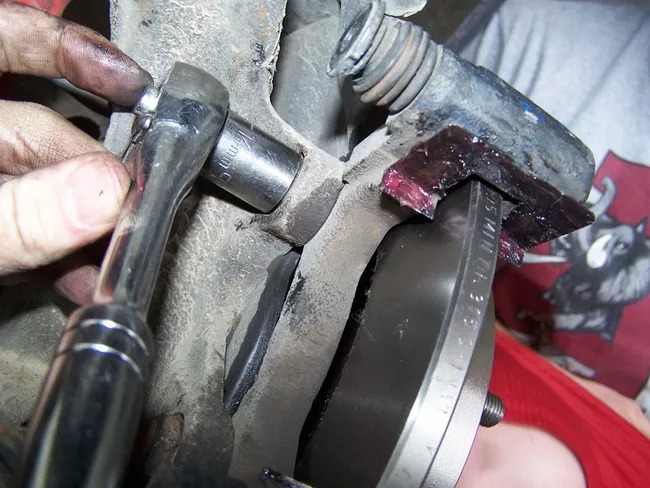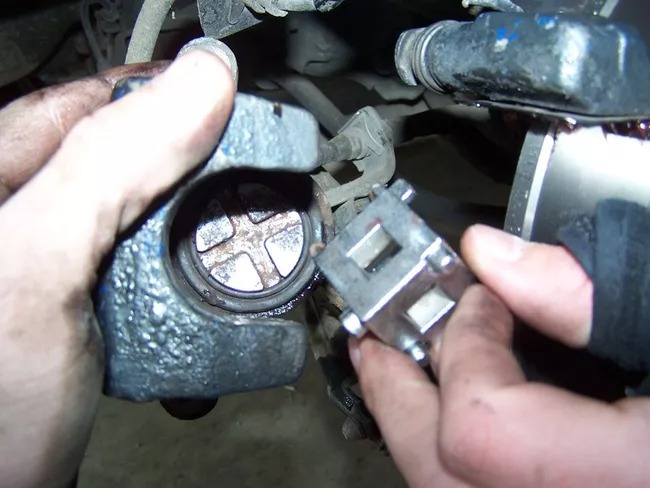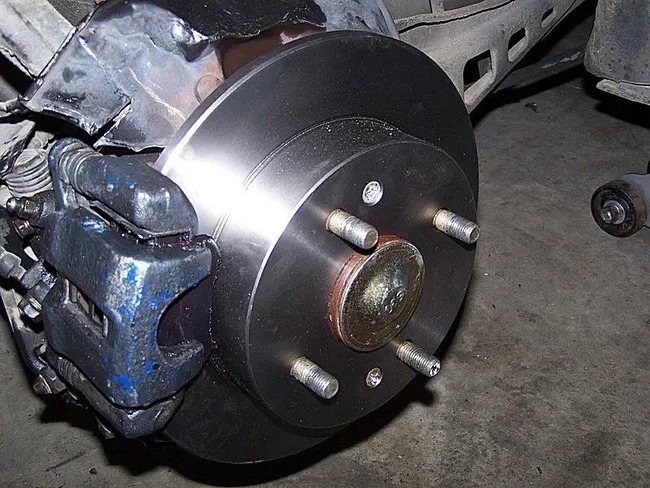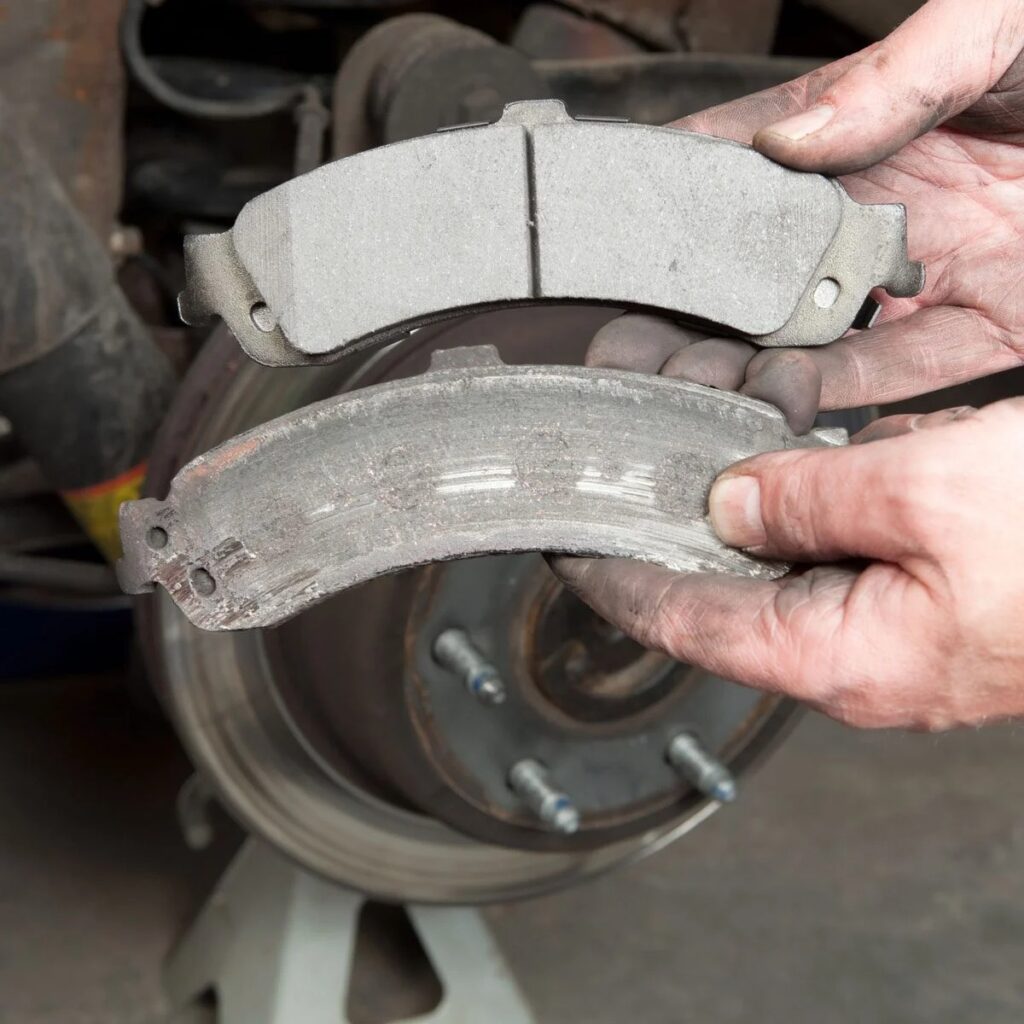It’s critical to understand when it’s time and how to repair rear disc brake. If you have a brake system in the back, waiting too long might cause damage to the discs. However, you shouldn’t need to repair your rear disc brakes too often. Because the front wheels conduct the majority of the braking, the rear wheels experience relatively little movement. A visual examination will reveal whether or not this is time. If you get your brakes serviced, make sure you examine them yourself or have them demonstrated to you when any repairs or changes are made. Let’s follow us to find out how to repair disc brake correctly.
Contents
Step 1: Take out the rear wheel

Begin by installing wheel fasteners next to the rear wheels. (Do not engage the emergency brake; doing so makes removing the calipers more difficult). Set the jack in position and raise just enough to apply the pressure on the shaft. To remove the lug nuts just on the wheel, be using a lug or contact wrench. Lift the car until the car rolls off the floor, then remove the wheel by spinning the lug nuts off of the lugs.
Step 2: Take Out the Brake Caliper
Remove the rear wheels while your vehicle is securely supported on jack stands. Loosen but do not remove the bolts that keep the brake caliper in place. You will have something on ready to hold the brake caliper. You wouldn’t want to have to detach the brake line (which requires a lot of brake bleed), but you also don’t want the caliper’s weight to pull on the line. As a caliper hanger, a tow strap works wonderfully.
Loosen the bolts that hold the caliper in position with a box-end wrench. Loosen and suspend the caliper upwards and from the workspace with mechanical wire or even a short elastic cord to prevent putting strain on the brake system.
Loosen the two bolts that hold the caliper bracket in position with a box-end wrench. To generate greater torque on stubborn bolts, you may need to use a longer-handled wrench. If you don’t own a, you may make one by slipping a piece of pipe out over the box-end wrenches handle. Loosen and carefully take the caliper away from the rotor.
Step 3: Clean It Up
After you’ve removed everything, it’s time to wash all of the braking components. Dust accumulation can have an impact on braking performance, particularly cooling. Cleaning also facilitates the removal of old components and the installation of new ones. Cleaning anything you’re fixing isn’t always required, but now with braking, it makes more sense.
Step 4: Releasing the Piston and Installing New Pads
Now, using the brake cylinder tool you purchased or own, put the piston rod in all the way. With the 10mm wrench, remove the bleeder screw and push the piston all the way in. The first few turns will most likely be difficult, but after that, there will be effortless. Check that the piston is properly aligned so that the pad fits properly! Once that is done, re-tighten the squirter screw all the ways.

Take the caliper bracket and reinstall it. Remember that the 14mm sits on top and the 17mm goes on the bottom! Check that you have all washers that came with them.
After that, slip the brake discs onto the bracket. Slide the brake caliper over the disc brake. Due to the strict fight, it can be a pain, but wriggle it there a very little bit and it should go right on. Replace the two 12mm screws in the brake and tighten them. After you’ve moved everything around, check your brake liquid pressure and replace it if required.
Step 5: Replace the Wheel
Place the disc on the studs and use your fingers to slip the nuts onto to the lugs. Rather than working in a circle around the hub, work in a starburst pattern, hopping over the hub. After threading all of the lugs, snug them by touch before tightening them with a lug and impact tool, working in the same star pattern. After driving your car for a few days, double-check the lugs.

Step 6: Press the brake pedal
After fitting the tires, make sure to reconnect the caliper cylinder to the disc brakes by pumping the brake pedal. Neglect to do this will lead in no braking being applied when the brakes are applied for the first time.
Step 7: A Safety Reminder
It is impossible to tell if brake pads contain carcinogens just by glancing at them, and so many aftermarket vendors continue to utilize the material. Never use pressurized gas to clean any of the components when changing brake pads. Use a molecule containing brake cleaning instead, which will contain the dust and keep it from going airborne. When working on brakes, always use a dust mask.
Hopefully, our above article will help you understand how to repair rear disc brake.

